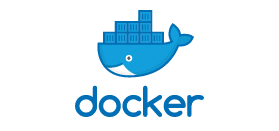Are you new to Docker and wondering where to start? Look no further! In this beginner-friendly tutorial, we’ll walk you through the basics of Docker, from installation to running your first containerized application. Let’s dive in!
1. What is Docker?
Docker is a popular platform that allows you to package, distribute, and run applications in isolated environments called containers. Containers are lightweight, portable, and efficient, making it easy to build and deploy applications across different environments.
2. Installation:
Before getting started with Docker, you’ll need to install it on your system. Docker provides installation packages for various operating systems, including Windows, macOS, and Linux. You can download the appropriate installer from the Docker website and follow the installation instructions for your platform.
3. Docker Basics:
Once Docker is installed, it’s time to familiarize yourself with some basic concepts:
- Images: Docker images are read-only templates that contain everything needed to run an application, including the code, runtime, libraries, and dependencies.
- Containers: Containers are instances of Docker images that run as isolated processes on your system. Each container has its own filesystem, network, and process space, making them lightweight and portable.
- Dockerfile: A Dockerfile is a text file that contains instructions for building a Docker image. It specifies the base image, environment variables, commands, and other configurations needed to create the image.
- Docker Hub: Docker Hub is a public registry that hosts thousands of pre-built Docker images contributed by the community. You can search for images, pull them to your local system, and use them as base images for your own applications.
4. Running Your First Docker Container:
To get started, let’s run a simple Docker container:
1 – Open a terminal or command prompt.
2 – Pull a Docker image from Docker Hub
docker pull hello-world3 – Run the Docker container
docker run hello-worldYou should see a message confirming that Docker is properly installed and running on your system.
5. Building Your Own Docker Image:
Now that you’ve run a container, let’s create your own Docker image:
1 – Create a new directory for your Docker project and navigate into it.
2 – Create a Dockerfile using a text editor:
FROM alpine:latest
CMD ["echo", "Hello, Docker!"]3 – Build the Docker image:
docker build -t my-docker-image .4 – Run a container using your custom image:
docker run my-docker-imageYou should see the message “Hello, Docker!” printed to the console.
Congratulations! You’ve successfully built and run your first Docker container. This is just the beginning of your journey with Docker, so stay curious and explore the many possibilities it offers for developing, deploying, and managing applications. Happy containerizing!
